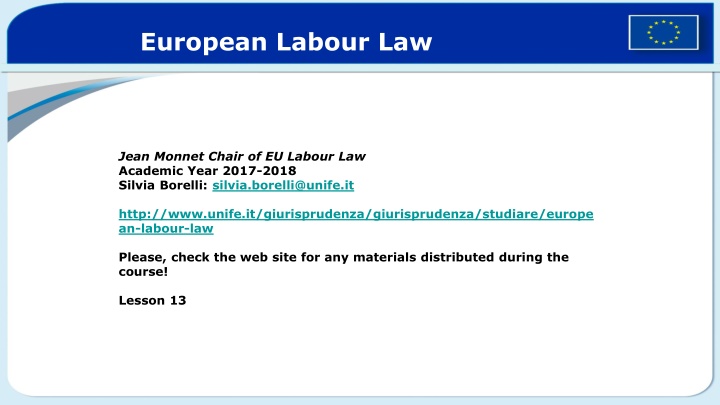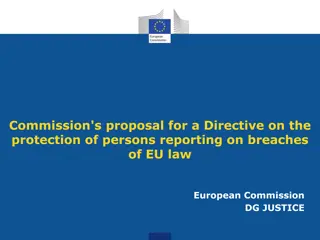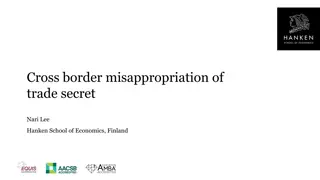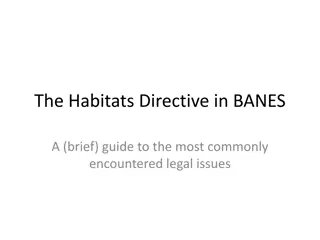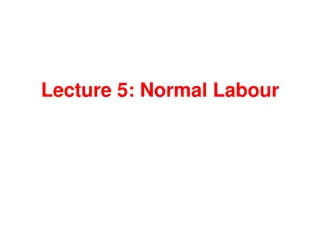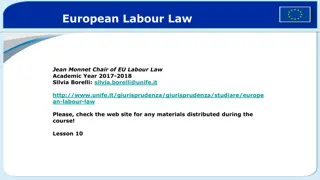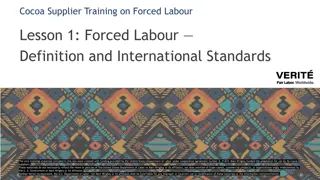European Labour Law: Collective Redundancies Directive
Directive 98/59, known as the Collective Redundancies Directive, sets rules for information and consultation of workers' representatives before collective redundancies. It also provides provisions on practical support for laid-off employees. The Directive aims to harmonize Member States' laws regarding the procedure and arrangements for collective redundancies, offering greater protection to workers in such events. It specifies thresholds for classifying redundancies as collective and outlines scope and procedures that employers must follow.
Download Presentation

Please find below an Image/Link to download the presentation.
The content on the website is provided AS IS for your information and personal use only. It may not be sold, licensed, or shared on other websites without obtaining consent from the author.If you encounter any issues during the download, it is possible that the publisher has removed the file from their server.
You are allowed to download the files provided on this website for personal or commercial use, subject to the condition that they are used lawfully. All files are the property of their respective owners.
The content on the website is provided AS IS for your information and personal use only. It may not be sold, licensed, or shared on other websites without obtaining consent from the author.
E N D
Presentation Transcript
European Labour Law Jean Monnet Chair of EU Labour Law Academic Year 2017-2018 Silvia Borelli: silvia.borelli@unife.it http://www.unife.it/giurisprudenza/giurisprudenza/studiare/europe an-labour-law Please, check the web site for any materials distributed during the course! Lesson 13
Collective Redundancies Directive 98/59 sets out rules on the information and consultation of workers representatives before collective redundancies are made, as well as provisions on practical support for the employees who are laid off. The Directive is a consolidated version of Directive 75/129/EEC, the original collective redundancies Directive, and Directive 92/56/EEC, which amended the 1975 Directive. The context for the introduction of this Directive was the economic difficulties following the oil crisis of 1973, which led to many closures and restructuring of enterprises. The aim of the Directive is to harmonise Member States' laws on the procedure and practical arrangements for collective redundancies, in order to afford greater protection to workers in the event of collective redundancies. Minimum standard (Article 5)
Collective Redundancies: Definition To be classified as collective, the number of redundancies has to reach the following thresholds stipulated in the Directive: (i) either, over a period of 30 days: at least 10 in establishments normally employing more than 20 and less than 100 workers; at least 10% of the number of workers in establishments normally employing at least 100 but less than 300 workers; at least 30 in establishments normally employing 300 workers or more; (ii) or, over a period of 90 days, at least 20, whatever the number of workers normally employed in the establishments in question. Terminations of individual contracts can also be included in the relevant numbers (provided that there are at least five) when they take place contemporaneously with the collective redundancies.
Scope The directive does not apply to: collective redundancies effected under contracts of employment concluded for limited periods of time or for specific tasks,except where those redundancies take place prior to the date of expiry or the completion of such contracts; workers employed by public administrative bodies or by establishments governed by public law. The rights of employees when the ownership of a business changes or the business becomes insolvent are covered by other EU rules.
Procedure Any employer contemplating collective redundancies must hold consultations with workers' representatives with a view to reaching an agreement. These consultations shall, at least, cover ways and means of avoiding collective redundancies or reducing the number of workers affected, and of mitigating the consequences by recourse to accompanying social measures aimed at redeploying or retraining those workers made redundant (Article 2 2). The employer must provide workers representatives with all relevant information in good time and must notify them of the following in writing: the reasons for the redundancies; the period during which the redundancies will be made; the number and categories of workers normally employed; the number and categories of workers to be made redundant; the criteria used to select those workers to be made redundant; the method used to calculate compensation (where applicable).
Procedure The employer must: Notify the competent public authority in writing of any projected collective redundancies. This notification must contain all the relevant information concerning the projected redundancies and consultations held, except for the method used to calculate compensation. Forward a copy of the notification to the workers representatives, who may send comments to the competent public authority. Collective redundancies take effect at the earliest 30 days after the notification; the competent public authority uses this period to seek solutions. EU countries can grant the public authority the power to reduce this period or to extend it to 60 days following notification, in cases where the problems cannot be resolved within the initial period. Wider powers of extension may be granted.
